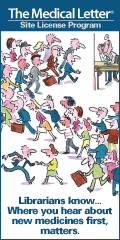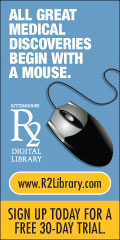

MLA Position Statements and FAQs
Copyright Fair Use FAQ
 Preface
Preface
This fair use document is intended as a guide to assist librarians in their practice. It is based on the ideas and interpretations of the authors in their capacity as librarians and does not purport to be a legal statement or to serve as legal advice. Because of the nature of the subject matter in which legal rights and liabilities often are dependent upon the specific facts and circumstances involved, readers are encouraged to consult with competent legal counsel as appropriate.
 What is copyright?
What is copyright?
Copyright is the legal protection provided to creators of original works to have the sole rights to reproduce and distribute their works to the public, to prepare derivative works, or perform and display their works in public. The copyright law attempts to balance the rights of the creator of the work with the rights of others to use the ideas and information expressed.
The concept of copyright dates back to England’s “Statute of Anne” in 1710, which encouraged creativity and learning by providing specific rights to authors (Bielefield, p. 26). U.S. copyright legislation is rooted in the Constitution and dates back to 1790. It has been fundamentally revised four times, the 1976 revision being the one we presently follow. The law has become the object of intense scrutiny in the 1990s as new technological developments have made reproduction and transmission of digitized information easy and widely available.
 What is covered by copyright?
What is covered by copyright?
Any original written work, literary work, work of art, sound recording, motion picture, other audiovisual work, and computer software package would be among the kinds of works that are protected. Prior to 1978, a published work had to bear a copyright notice, had to be printed in the U.S., and needed to be deposited with the U.S. Copyright Office. As a result of the U.S. joining the Berne Convention in 1989, works published after March 1, 1989, do not have to have the copyright notice affixed to them in order to be protected (Bruwelheide, p. 7).
 What cannot be covered by copyright?
What cannot be covered by copyright?
Copyright cannot protect ideas, facts, processes, or methods of operation (Bielefield, p. 38). It cannot protect works consisting entirely of information that is common property and containing no original authorship, such as standard calendars, height and weight charts, and other common sources. It also cannot protect works in the “public domain,” which is defined by age and nature of the material. If the work was published and publicly distributed more than 75 years ago, it is no longer copyright protected.
Works created by the U.S. government employees for the accomplishment of their work are in the public domain, and are not protected. Works created by outside contractors of the U.S. government may or may not be public domain, depending upon the contract. State and local governments may claim copyright if they wish (Bruwelheide, p. 6).
 How long does copyright last?
How long does copyright last?
For works created on or after January 1, 1978, works created by an individual or joint works are protected for the life of the author (or the longest lived author) plus 50 years. In the case of anonymous works or “corporate” works, protection lasts 75 years from the first publication date or 100 years from the date of creation, whichever comes first (Bielefield, p. 37).
Unpublished works formerly enjoyed common law protection and an author had perpetual proprietary interest in any unpublished work. Under the current Act, no copyright on unpublished material will expire before December 31, 2002. If such a work is published before that date, copyright will be extended for an additional 25 years from the publication date, but will not expire before December 31, 2027 (Gassaway, p. 22).
 Should I apply for copyright registration on my works?
Should I apply for copyright registration on my works?
Creators of works can add the accepted copyright symbol, which is the small c in a circle (©), the year of first publication, and legal owner's name to all works without registering the work. “This will make it difficult for infringers to claim innocence” and make it possible for requests to be sent to the copyright holder for permission to use it legally.
The present U.S. statute does not require that a work be registered in order to be copyright protected, but registration is a prerequisite to filing most copyright infringement lawsuits, and early registration makes it possible for the copyright owner to recover damages and attorney fees if it goes to court (Bruwelheide, p. 7).
 How do I apply for copyright?
How do I apply for copyright?
Request a form from the U.S. Register of Copyrights. The form varies with the type of work. Fill it out and return it with two copies of the work if published, or one copy of the work if unpublished, and a modest fee. Address: U.S. Copyright Office, Library of Congress, 101 Independence Ave., Washington, DC 20559. Call the Forms Hotline at 202/707-9100 or print the form from the U.S. Copyright Office Web site.
 Does the profit status of my workplace affect the legal view of
my use of copyrighted material by me or my library?
Does the profit status of my workplace affect the legal view of
my use of copyrighted material by me or my library?
It can. In the case of American Geophysical Union v. Texaco (S.D.N.Y., 1992), the court established that the copyright owners had been harmed financially by corporate copyright of journal articles in a special library for an employee/researcher. The fact that the library resided in a for-profit corporation contributed to this decision. Another issue in the case was that authorization to photocopy the particular journal was available through the Copyright Clearance Center, but was not requested.
This case (affirmed by the Second Circuit Court of Appeals in 1994) is important to health sciences librarians, regardless of the profit status of our hospitals, research institutes, or academic health sciences librarians, regardless of the profit status of our hospitals, research institutes, or academic health sciences centers.
 Why can’t I ignore the copyright law?
Why can’t I ignore the copyright law?
Copyright cases are indeed taken to court. Awards to copyright owners can range from $500-$20,000 per act of infringement, and up to $100,000 in cases declared to be “willful infringement.” Examples of cases are: American Geophysical Union V. Texaco, Inc. (1992), Basic Books Inc., v. Kinko’s Graphics Corp. (1991), and Playboy Enterprises Inc. v. Frena (1993).
Appendix C of the Bruwelheide book summarizes 14 significant cases (p. 98-101). The concept of “fair use” can offer some limited assistance, but when in doubt, it is a good idea to request written permission from the copyright owner to use the material as you wish. Many times, the permission is granted. Section 504(c)(2) of the Copyright Act addresses the concept of “innocent infringement by library or nonprofit educational institution,” which can reduce the amount of the award, but does not eliminate liability. The full text of Section 504 is included as Appendix G of the Bielefield book (p. 136-7).
 Why is it important for me to be involved in discussions related
to institutional copyright policy?
Why is it important for me to be involved in discussions related
to institutional copyright policy?
Librarians have always been advocates of access to information. How we are permitted to access, use and transmit information is critical not only librarians, but also to health professionals and educators. Discussions with our administrators and legal counsel is important to establish how we will fulfill our service, education and clinical care missions while managing the risk incurred by the institution and its employees.
As technology makes electronic dissemination of information easier and faster, we need to raise awareness of copyright issues and begin a dialogue within our medical centers to set policies that provide for effective and legal use of copyrighted material.
 Where can I find the copyright law and information about it?
Where can I find the copyright law and information about it?
Many libraries, including health sciences libraries, have a copy of the copyright law; it is also available from the Legal Information Institute of the Cornell Law School and the US. Copyright Office. In addition, the U.S. Copyright Office privides information on many copyright topics, available in print or on its Website.
 References
References
Primary sources for this paper are listed below. References cited in the body of the fact sheet refer to the author of the work, with the page number. For additional resources, consult the Copyright Bibliography Fact Sheet available from MLA.
Bruwelheide, Janis H. The copyright primer for librarians and educators. 2nd Edition. Washington, DC: American Library Association, 1995.
Bielefield, Arlene and Cheeseman, Lawrence. Libraries and copyright law. New York: Neal-Schuman Publishers, Inc., 1993.
Gassaway, Laura N. and Wiant, Sally K. Libraries and copyright: a guide to copyright law in the 1990s. Washington, DC: Special Libraries Association, 1994:22.
 Author
Author
Prepared January 1998 by
Deborah H. Ward
Lottes Health Sciences Library
University of Missouri
Medical Library Association
312.419.9094
info@mlahq.org
© 1999-2008 Medical Library Association
Send site questions/comments to systems administrator
Last Updated: 2007 July 13
www.mlanet.org/government/positions/genfuse.html





